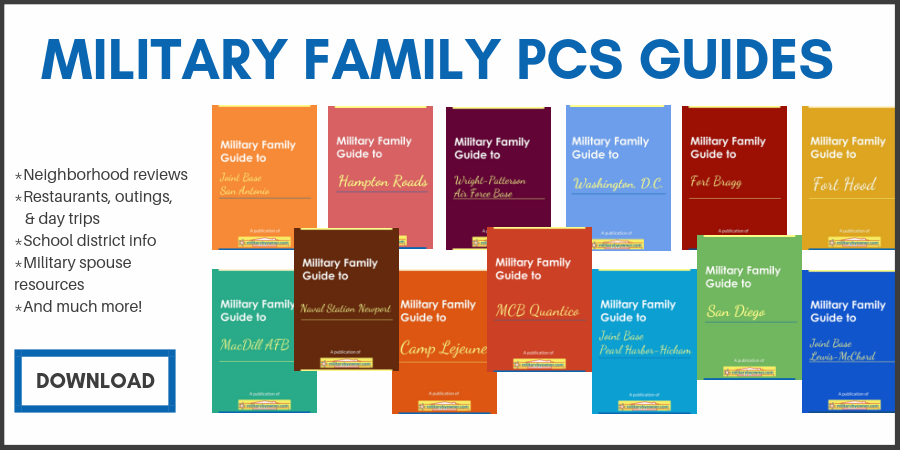Advice for Military Families Moving Schools Mid-Year
You’ve just settled into a groove and things are going super smoothly. The kids have friends and are starting to feel confident at school.
But you’re off-cycle movers, so a mid-school year PCS is headed your way.
There are so many worries during a PCS move. Will the movers be sketchy? Can I find housing in February? How did I get so many curtains?!?! On top of all of those normal stressors, you’re also trying to transition your school-aged kids to a new school, mid-year!
Just finding a new school can be a full time job! Never mind all the logistics that come with handling the transferring process. It can all seem like an awful lot. Feel more confident when you borrow these top tips for mid-year movers.
Advice for Military Families Moving Schools Mid-Year

1. Build a Binder
Create a school binder for each child. This will be their academic history file and can help make the transferring process easier.
Inside your child’s binder, store their report cards and progress reports from this current grade. This is also a great place to keep any education plans, like IEPs or 504 Plans. If you have testing results for anything, even run-of-the-mill state tests, stick it in.
2. Update Academic Plans
Whether your child has an IEP, 504 Plan, or Gifted Education Plan, right now is the best time to update everything.
Peek at the paperwork to double check expiration dates for annual and triennial reviews. If the three-year reevaluation is coming up, ask your child’s current school to get started ASAP. Testing can take time.
No matter what, call a meeting and ask for the goals and progress reports to be updated based on the most recent data. You’ll want to give the next school the most accurate picture of where your child is performing.
3. Research Homes, then Schools
It can be really hard to find a great home in an ideal district. Something has to give! It’s up to your family to decide what’s the most important: proximity to amenities, commute to job(s), quality of schools. While it would be nice to have them all, sometimes you have to pick one or two things that are most important.
Check out where homes are available and what you can afford with your BAH. Once you have a few good towns or neighborhoods on your radar, scope out the schools.
It’s important to use a few sources to check out the quality of the schools. GreatSchools, SchoolDigger, and Niche are all good data-based resources.
After you explore these sites, reach out through your social networks to get some word-of-mouth recommendations, too. Remember that just because one school was great or terrible for one family doesn’t mean your family will have the same experience.
4. Contact Your Next School
Before you show up to enroll, reach out to the school and build a connection. Sending a friendly email to the school principal is a great idea! It will help them recognize your child’s name on their student roster.
If your child has special education needs, medical concerns, or requires gifted education services, reaching out in advance can help the new school adjust. They can make space in their programs and schedules to meet your child’s needs.
If you have time, try to take a tour of the school during school hours before you enroll. Seeing the students and teachers learning together can help your child feel comfortable in their new school.
5. Relax and Go with Your Gut
Yes, your child’s education is important. But so is safety, comfort, and overall well being. It doesn’t matter how well ranked a school is if your child doesn’t feel at home there.
If you can, get your child’s input into their ideal next school. Ask what makes them feel successful or confident, what they like in a teacher, and what activities they might like to try.
Use their ideas and suggestions to help you find a place where your whole family can feel right at home!
6. Know Your Rights
Parents have a ton of rights at school. Military families can use MIC3 to help their children transition education plans or smooth the way to graduation. This is really important for gifted education plans.
IEPs and 504 Plans are protected by federal law, but each state or district can set up gifted education any way they prefer. MIC3 helps to protect children with advanced academic needs by ensuring their continued enrolled in GT programs, at least until further assessments are done by the new school.
If you get pushback about keeping your child on their same school path, rely on your rights! Share information about MIC3 and get to know FOIA, FERPA, IDEA, and the ADA.
Best of luck to your family on your mid-year move!





